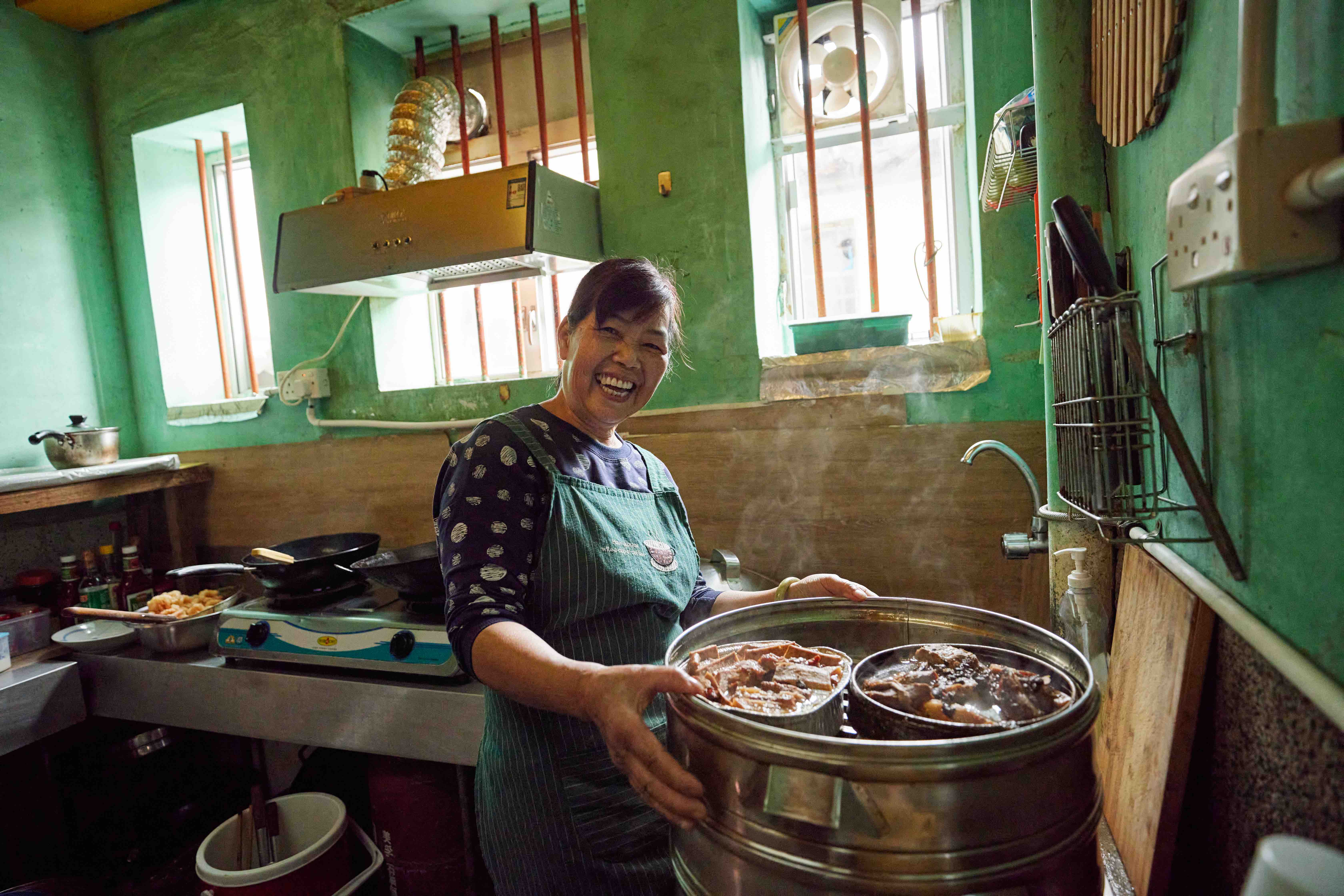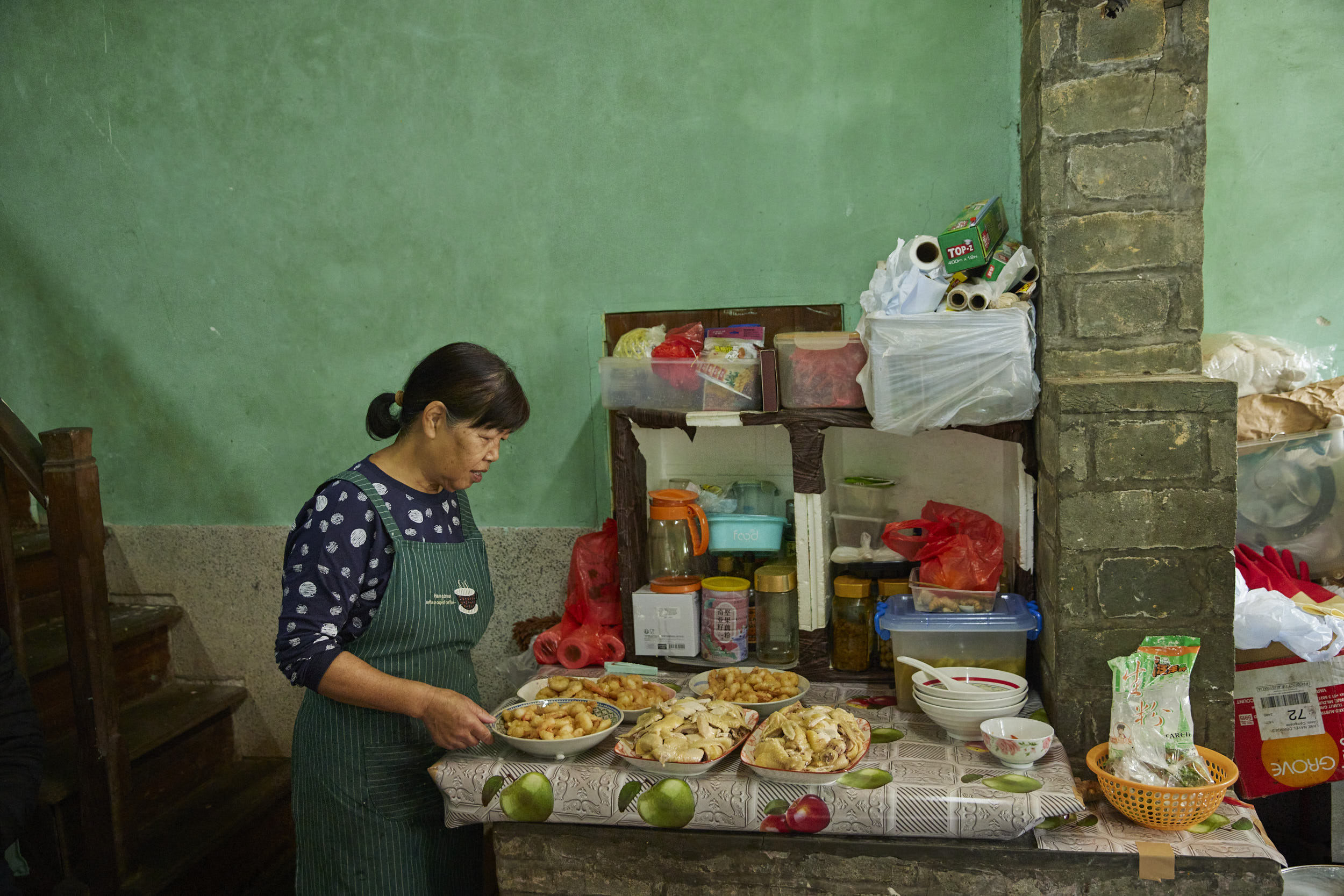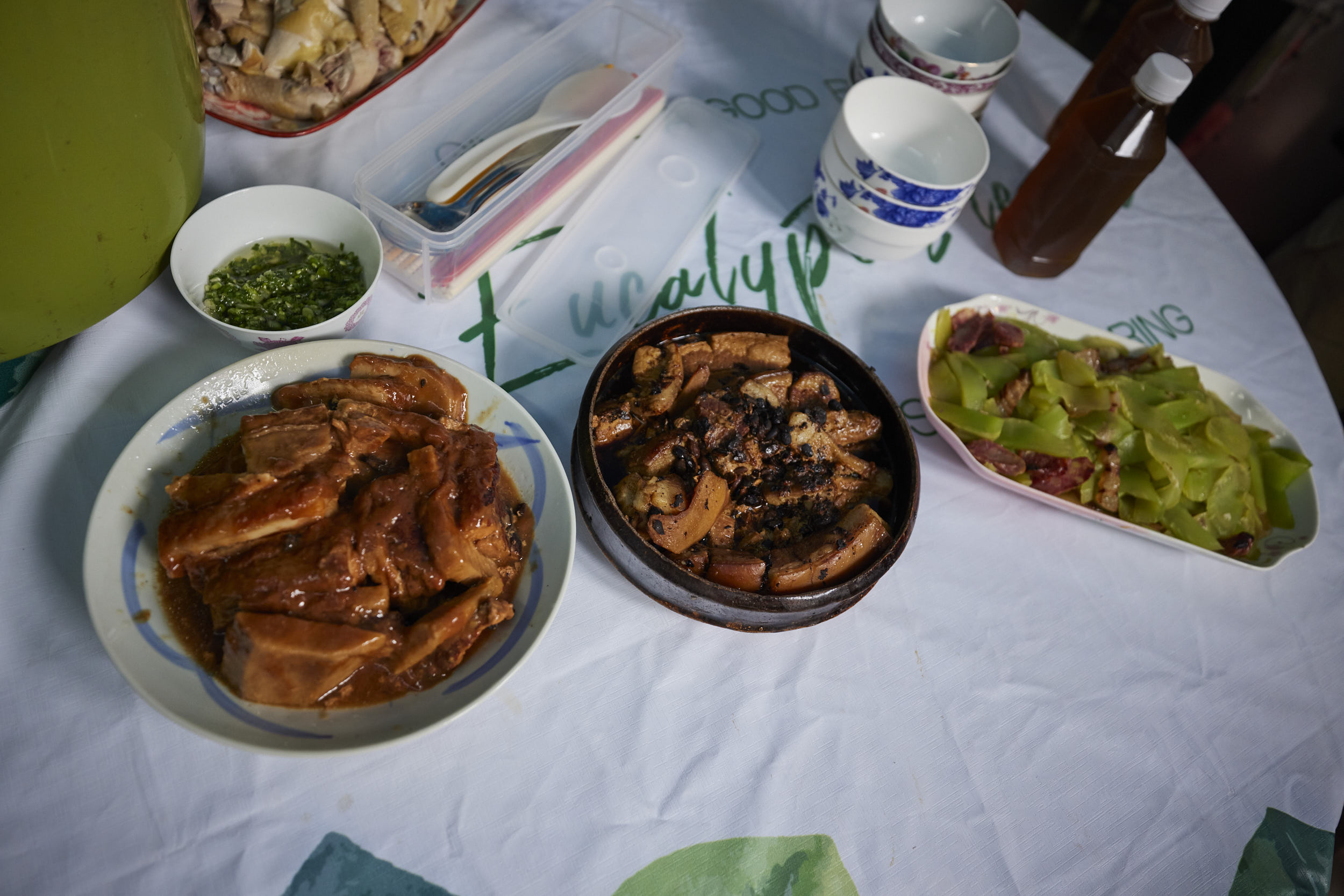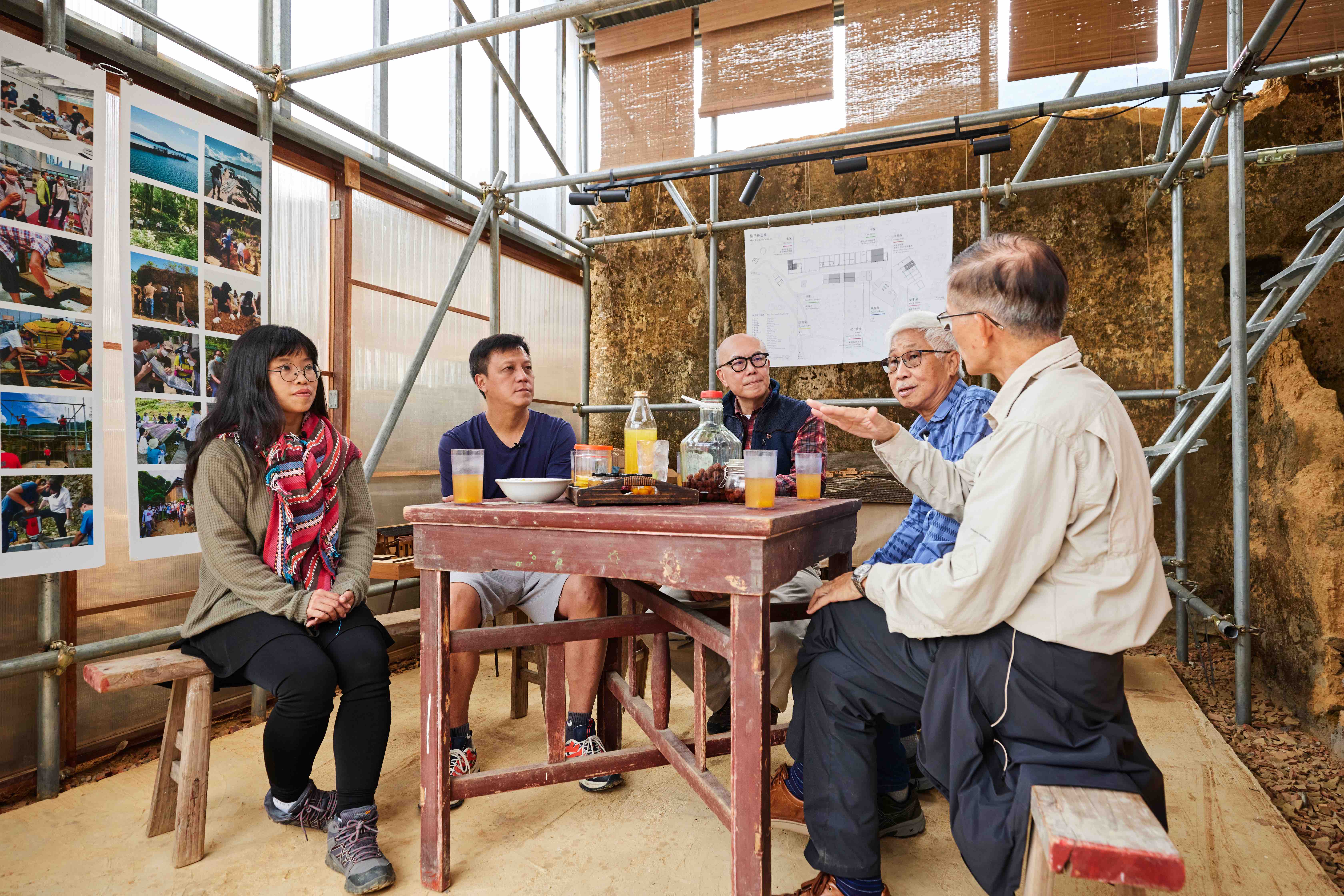Disclaimer: This is a feature story and does not represent the Group's position.
07 February 2023
Hakka stewed pork, braised pork with preserved vegetables, and Hakka salted chicken are all popular Hakka or Poon Choi dishes during the New Year. If for no other reason, it is the salty, fragrant and fatty tastes that encourage us to indulge in big feasts. This is particularly so for the Hakka people who have emigrated to the UK or Canada and want to relive the taste of their hometown. However, having a liking for Hakka cuisine does not equal understanding Hakka culture. The real "six bowls, eight pots and ten dishes" of Hakka dishes are actually not flashy, and the salty, fragrant and fatty tastes have their practical considerations. If you can only taste one small dish to fully understand the Hakka culture, it must be a Hakka stir-fry that is salty, fresh and sweet, with the meat being fat but not greasy.
The so-called "six bowls, eight pots and ten dishes" form the basic style of traditional Hakka banquets for guests. The containers are mostly made of peasant utensils such as pots, bowls and large bowls, reflecting legacy customs as well as the simplicity and pragmatic characteristics of Hakka farmers. As for Hakka people's emphasis on delicacies from the mountains rather than the sea, this stems from the places where Hakka people migrated to and lived.
According to records, the Hakka people first migrated to the south and lived in central and southern China in the late Northern Song Dynasty to avoid the invasion of Jin people. They were mainly distributed in the tripoint border areas of Fujian, Guangdong and Jiangxi. These plains were reclaimed and developed long ago, so Hakka people had to settle on hillsides and reclaim the slopes, which are the terraced fields that everyone now sees. It is precisely because these settlements are far from the coastline, and the Hakka people make their living from farming, that Hakka cuisine relies on mountain delicacies rather than seafoods. Haven’t you ever noticed that famous Hakka dishes use mainly pork, beef, chicken, duck and other livestock?
Because the Hakka people are scattered around the tripoint border areas of Fujian, Guangdong and Jiangxi, Hakka cuisine has been further sub-divided into Dongjiang style, Fujian west style, Meizhou style, Gannan style and overseas style. When Hakka people fled southward to a warmer climate, they often had to use salt to preserve their food. In addition, Hakka people made their living from agriculture so sweated a lot and needed to supplement their diets with salt to maintain their physical strength. They became good at using all kinds of processed pickled vegetables (such as fermented cabbage, Fucai, prunes and mustard greens with large leaves) as food ingredients.
The so-called "six bowls, eight pots and ten dishes" form the basic style of traditional Hakka banquets for guests. The containers are mostly made of peasant utensils such as pots, bowls and large bowls, reflecting legacy customs as well as the simplicity and pragmatic characteristics of Hakka farmers. As for Hakka people's emphasis on delicacies from the mountains rather than the sea, this stems from the places where Hakka people migrated to and lived.
According to records, the Hakka people first migrated to the south and lived in central and southern China in the late Northern Song Dynasty to avoid the invasion of Jin people. They were mainly distributed in the tripoint border areas of Fujian, Guangdong and Jiangxi. These plains were reclaimed and developed long ago, so Hakka people had to settle on hillsides and reclaim the slopes, which are the terraced fields that everyone now sees. It is precisely because these settlements are far from the coastline, and the Hakka people make their living from farming, that Hakka cuisine relies on mountain delicacies rather than seafoods. Haven’t you ever noticed that famous Hakka dishes use mainly pork, beef, chicken, duck and other livestock?
Because the Hakka people are scattered around the tripoint border areas of Fujian, Guangdong and Jiangxi, Hakka cuisine has been further sub-divided into Dongjiang style, Fujian west style, Meizhou style, Gannan style and overseas style. When Hakka people fled southward to a warmer climate, they often had to use salt to preserve their food. In addition, Hakka people made their living from agriculture so sweated a lot and needed to supplement their diets with salt to maintain their physical strength. They became good at using all kinds of processed pickled vegetables (such as fermented cabbage, Fucai, prunes and mustard greens with large leaves) as food ingredients.

Why do we say that a Hakka stir fry can reflect Hakka culture? It originates from the characteristics of Hakka farmers who are thrifty and hardworking. The Hakka people usually live frugally and know that it was not easy for their ancestors to cultivate land. Therefore, they will slaughter three heads of livestock as a sacrifice when they worship their ancestors during new year and other festive dates, in order to reward the ancestors and the Lord of the Land. In order not to waste food, they pay great attention to the proper use of livestock. Various parts including internal organs are made into delicacies. The tradition of sacrifice has since transformed over the years to become the present-day eight-course banquet set of "four stewing and four stir-frying".
The so-called "stew" refers to cooking in a large pot and keeping it warm for a long time. The typical "four stews" refer to the four dishes of stewed pork belly with fermented cabbage (or pickled vegetables), stewed pork belly, stewed pork ribs and stewed dried bamboo shoots in fat soup. The stir-fry dishes include leeks with blood (pork belly is also used), fried fungus with pork lung and pineapple, and Hakka fried pork.
Hakka fried pork is the Hakka stir-fry mentioned at the beginning of the article. Authentic Hakka dishes such as this are indispensable. Traditionally, the three livestock sacrifices in the offerings of the Hakka people are chopped chicken, a large piece of pork and a dried squid. When the sacrifice is over, the thrifty Hakka people will take home the sacrifices they have used to worship the gods and mix them with produce from their own vegetable gardens. Green onions are fried into salty, spicy and fragrant side dishes, while the fried meat is served with rice and wine, providing people with enough calories to ensure their physical fitness. That is the reason why authentic Hakka stir fry will never be without three layers of meat, dried squid and shallots.
A seemingly simple Hakka stir-fry not only retains the traditional living habits of the Central Plains, but also reflects the diligent and thrifty personality of the Hakka people who lived on the mountains and made good use of sacrifices after they moved south. No wonder people who have emigrated overseas can savour the taste of their hometown after a bite of stir fry.
The so-called "stew" refers to cooking in a large pot and keeping it warm for a long time. The typical "four stews" refer to the four dishes of stewed pork belly with fermented cabbage (or pickled vegetables), stewed pork belly, stewed pork ribs and stewed dried bamboo shoots in fat soup. The stir-fry dishes include leeks with blood (pork belly is also used), fried fungus with pork lung and pineapple, and Hakka fried pork.
Hakka fried pork is the Hakka stir-fry mentioned at the beginning of the article. Authentic Hakka dishes such as this are indispensable. Traditionally, the three livestock sacrifices in the offerings of the Hakka people are chopped chicken, a large piece of pork and a dried squid. When the sacrifice is over, the thrifty Hakka people will take home the sacrifices they have used to worship the gods and mix them with produce from their own vegetable gardens. Green onions are fried into salty, spicy and fragrant side dishes, while the fried meat is served with rice and wine, providing people with enough calories to ensure their physical fitness. That is the reason why authentic Hakka stir fry will never be without three layers of meat, dried squid and shallots.
A seemingly simple Hakka stir-fry not only retains the traditional living habits of the Central Plains, but also reflects the diligent and thrifty personality of the Hakka people who lived on the mountains and made good use of sacrifices after they moved south. No wonder people who have emigrated overseas can savour the taste of their hometown after a bite of stir fry.


